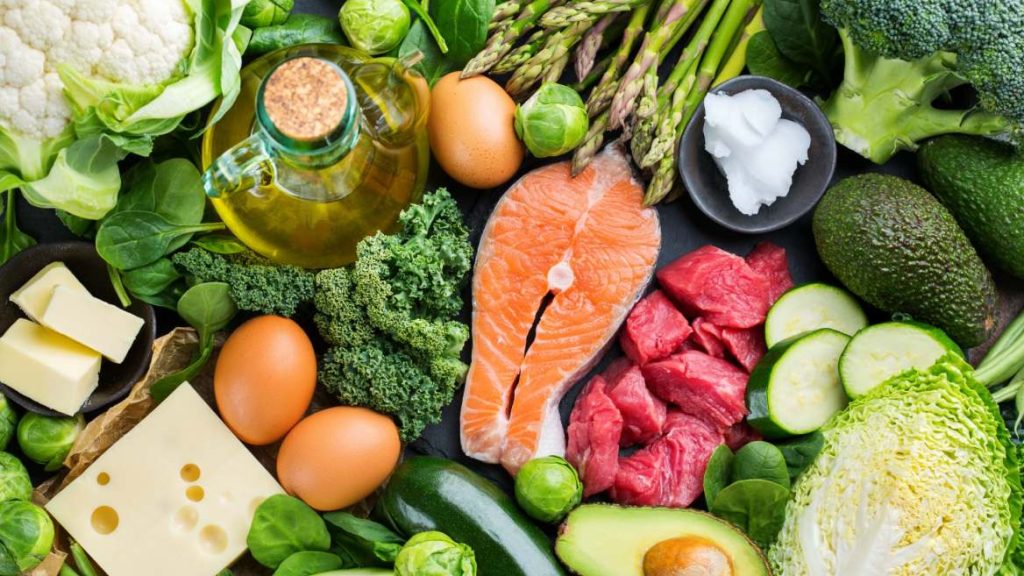
1. Types of Keto Diets
The ketogenic (keto) diet is a high-fat, low-carbohydrate eating plan designed to induce a metabolic state called ketosis, where the body burns fat for fuel instead of carbohydrates. Several variations of the keto diet exist to cater to different needs and preferences:
- Standard Ketogenic Diet (SKD): The most common form, consisting of very low carb (5-10% of total intake), moderate protein (20-25%), and high fat (70-75%).
- Cyclical Ketogenic Diet (CKD): Involves periods of higher-carb refeeds, such as 5 ketogenic days followed by 2 high-carb days. This is often used by athletes.
- Targeted Ketogenic Diet (TKD): Allows for the consumption of carbs around workout times to provide extra energy for exercise.
- High-Protein Ketogenic Diet: Similar to SKD, but includes more protein (35% of total intake), making it 60% fat, 35% protein, and 5% carbs.
2. Keto vs. Low-Carb, High-Fat (LCHF) Diets

Both the keto diet and the LCHF (Low-Carb, High-Fat) diet emphasize low carbohydrate intake and high fat consumption, but there are key differences:
- Carbohydrate Intake: Keto diets typically limit carbs to around 20-50 grams per day, while LCHF diets allow for a broader range, up to 100 grams or more.
- Ketosis: The primary goal of the keto diet is to induce ketosis. LCHF diets might not always lead to ketosis since the carbohydrate limit is less strict.
- Flexibility: LCHF diets offer more flexibility in food choices and macronutrient ratios, making them easier to follow for some people.
- Target Audience: Keto diets are often used for specific medical conditions (like epilepsy) and weight loss, while LCHF diets are generally adopted for overall health improvement and gradual weight loss.
3. Advantages and Disadvantages of the Keto Diet

Advantages
- Weight Loss: Keto diets can promote significant weight loss due to the reduced carbohydrate intake and increased fat burning.
- Appetite Control: High fat and protein intake can increase satiety, reducing overall calorie consumption.
- Improved Blood Sugar Control: Reducing carb intake can stabilize blood sugar levels and improve insulin sensitivity, beneficial for individuals with type 2 diabetes.
- Enhanced Mental Focus: Ketones, the byproducts of fat breakdown, serve as a steady energy source for the brain, potentially improving mental clarity and focus.
- Increased Energy: Once adapted, the body can efficiently use fat as a primary energy source, which might improve endurance and overall energy levels.
Disadvantages
- Keto Flu: Initial transition into ketosis can cause symptoms like fatigue, headache, nausea, and irritability, known as the “keto flu.”
- Nutrient Deficiencies: Restrictive nature can lead to deficiencies in vitamins and minerals, requiring careful planning or supplementation.
- Digestive Issues: High fat intake can cause digestive problems like constipation or diarrhea in some individuals.
- Social and Practical Challenges: Adhering to a strict keto diet can be challenging in social situations and may require significant meal planning and preparation.
- Long-Term Sustainability: Maintaining the diet long-term can be difficult for some people due to its restrictive nature.
Conclusion
The keto diet offers a structured approach to weight loss and health improvement through low carbohydrate and high fat intake. While it has notable benefits, such as weight loss, appetite control, and improved blood sugar management, it also comes with challenges like the initial “keto flu,” potential nutrient deficiencies, and the need for careful planning. Comparing the keto diet with the more flexible LCHF approach can help individuals choose the right path for their health and lifestyle needs. As always, consulting with a healthcare professional before starting any new diet is advisable.


